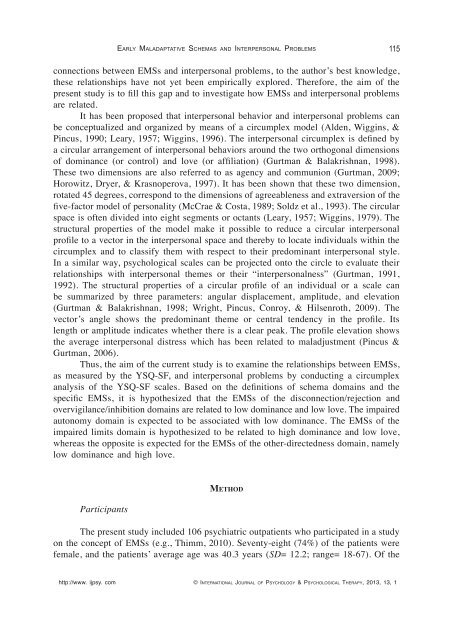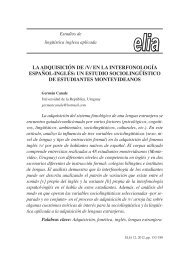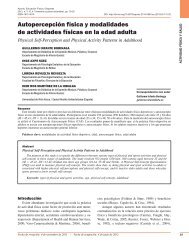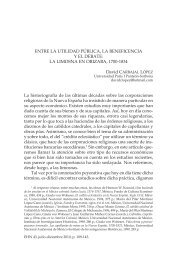wkfHD6mD
wkfHD6mD
wkfHD6mD
You also want an ePaper? Increase the reach of your titles
YUMPU automatically turns print PDFs into web optimized ePapers that Google loves.
Early maladapTaTivE SchEmaS and inTErpErSonal problEmS 115<br />
connections between EMSs and interpersonal problems, to the author’s best knowledge,<br />
these relationships have not yet been empirically explored. Therefore, the aim of the<br />
present study is to fill this gap and to investigate how EMSs and interpersonal problems<br />
are related.<br />
It has been proposed that interpersonal behavior and interpersonal problems can<br />
be conceptualized and organized by means of a circumplex model (Alden, Wiggins, &<br />
Pincus, 1990; Leary, 1957; Wiggins, 1996). The interpersonal circumplex is defined by<br />
a circular arrangement of interpersonal behaviors around the two orthogonal dimensions<br />
of dominance (or control) and love (or affiliation) (Gurtman & Balakrishnan, 1998).<br />
These two dimensions are also referred to as agency and communion (Gurtman, 2009;<br />
Horowitz, Dryer, & Krasnoperova, 1997). It has been shown that these two dimension,<br />
rotated 45 degrees, correspond to the dimensions of agreeableness and extraversion of the<br />
five-factor model of personality (McCrae & Costa, 1989; Soldz et al., 1993). The circular<br />
space is often divided into eight segments or octants (Leary, 1957; Wiggins, 1979). The<br />
structural properties of the model make it possible to reduce a circular interpersonal<br />
profile to a vector in the interpersonal space and thereby to locate individuals within the<br />
circumplex and to classify them with respect to their predominant interpersonal style.<br />
In a similar way, psychological scales can be projected onto the circle to evaluate their<br />
relationships with interpersonal themes or their “interpersonalness” (Gurtman, 1991,<br />
1992). The structural properties of a circular profile of an individual or a scale can<br />
be summarized by three parameters: angular displacement, amplitude, and elevation<br />
(Gurtman & Balakrishnan, 1998; Wright, Pincus, Conroy, & Hilsenroth, 2009). The<br />
vector’s angle shows the predominant theme or central tendency in the profile. Its<br />
length or amplitude indicates whether there is a clear peak. The profile elevation shows<br />
the average interpersonal distress which has been related to maladjustment (Pincus &<br />
Gurtman, 2006).<br />
Thus, the aim of the current study is to examine the relationships between EMSs,<br />
as measured by the YSQ-SF, and interpersonal problems by conducting a circumplex<br />
analysis of the YSQ-SF scales. Based on the definitions of schema domains and the<br />
specific EMSs, it is hypothesized that the EMSs of the disconnection/rejection and<br />
overvigilance/inhibition domains are related to low dominance and low love. The impaired<br />
autonomy domain is expected to be associated with low dominance. The EMSs of the<br />
impaired limits domain is hypothesized to be related to high dominance and low love,<br />
whereas the opposite is expected for the EMSs of the other-directedness domain, namely<br />
low dominance and high love.<br />
Participants<br />
Method<br />
The present study included 106 psychiatric outpatients who participated in a study<br />
on the concept of EMSs (e.g., Thimm, 2010). Seventy-eight (74%) of the patients were<br />
female, and the patients’ average age was 40.3 years (SD= 12.2; range= 18-67). Of the<br />
http://www. ijpsy. com © InternatIonal Journal of Psychology & PsychologIcal theraPy, 2013, 13, 1












